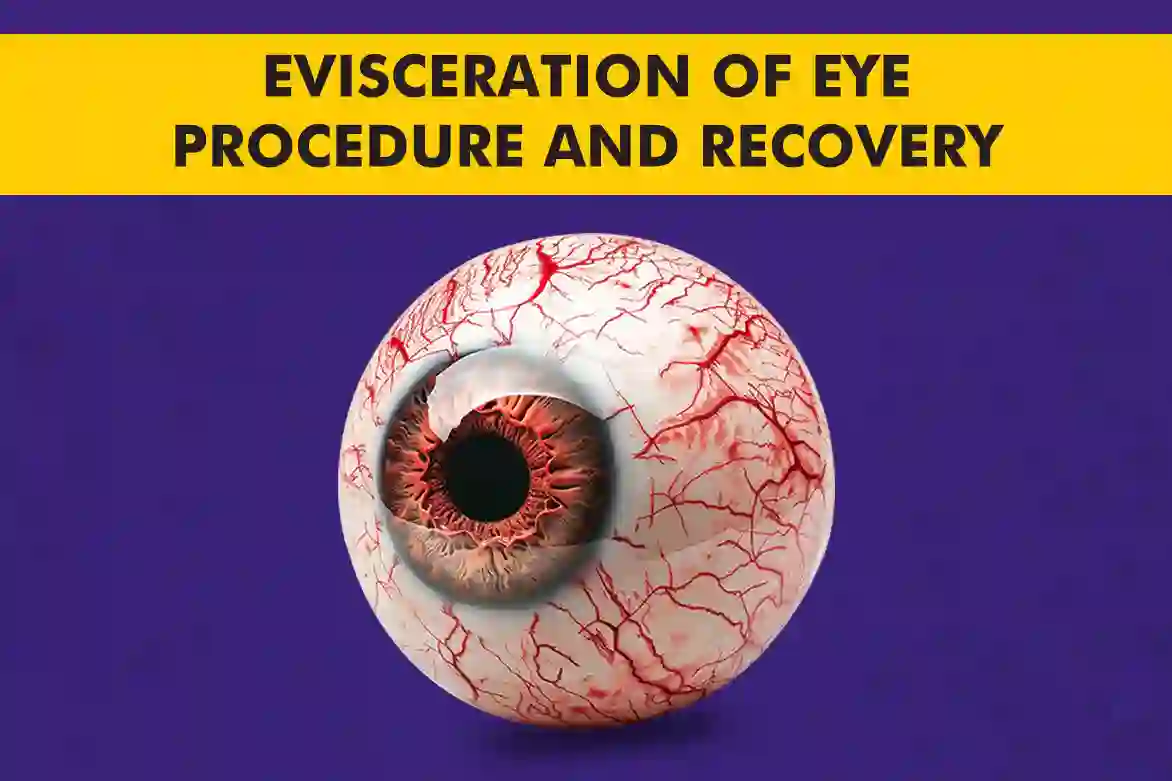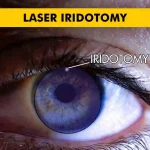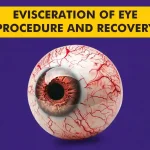Evisceration of the eye is a surgical procedure that involves the removal of the contents of the eye while preserving the outer shell, or sclera. This procedure is typically performed to relieve pain or manage severe eye conditions that cannot be treated with other methods. It is done in cases where there is no useful vision and the eye is painful or infected.
During the evisceration procedure, the eye’s natural lens, iris, and vitreous gel are removed, leaving the sclera intact. The eye is then prepared for an artificial ocular prosthesis, which is custom-made to match the patient’s remaining eye.
Evisceration should not be confused with enucleation, which involves the complete removal of the eye. Evisceration offers several advantages over enucleation, including a more natural appearance and better motility of the artificial eye.
What Is Evisceration?
Evisceration of the eye is a complex surgical procedure that requires the expertise of an ophthalmologist or an oculoplastic surgeon. It is usually performed under general anesthesia to ensure patient comfort and safety.
The procedure involves the following steps:
- The eye is carefully examined to assess its condition and determine if evisceration is the most suitable treatment option.
- The patient’s medical history, including any previous eye surgeries or conditions, is reviewed to ensure a safe procedure.
- The surgical site is sterilized, and the patient’s eye is prepared for surgery.
- An incision is made in the conjunctiva, the thin membrane that lines the inside of the eyelids and covers the sclera. The cornea is then excised.
- The contents of the eye, including the lens, iris, and vitreous gel, are gently removed.
- The sclera is cleaned and prepared to receive the ocular prosthesis.
- The ocular prosthesis, which is custom-made for each patient, is inserted into the sclera.
- The conjunctiva is then sutured to close the incision site.
Understanding the steps involved in evisceration can help patients feel more informed and prepared for the procedure.
Evisceration of Eye Indications
Evisceration of the eye may be recommended for various reasons, including:
- Severe trauma or injury to the eye that cannot be repaired
- Intractable pain or discomfort in the eye
- End-stage eye diseases, such as advanced glaucoma or untreatable infections
- Eye tumors that cannot be treated with other methods
It is important to consult with an ophthalmologist or an oculoplastic surgeon to determine if evisceration is the most appropriate treatment option for your specific condition.
Read about oculoplastic surgery
The Procedure: Step by Step
The evisceration procedure is performed in a sterile operating room under general anesthesia. The following is a step-by-step guide to the procedure:
Preparing the patient: The patient is positioned comfortably on the operating table, and general anesthesia is administered to ensure a painless procedure.
Sterilizing the surgical site: The eye area is thoroughly cleaned and sterilized to reduce the risk of infection.
Making the incision: An incision is made in the cornea, allowing access to the contents of the eye.
Removing the contents of the eye: The natural lens, iris, and vitreous gel are carefully removed, leaving the sclera intact.
Cleaning and preparing the sclera: The sclera is cleaned and prepared to receive the ocular prosthesis.
Inserting the ocular prosthesis: The custom-made ocular prosthesis is inserted into the sclera, creating a natural-looking appearance.
Closing the incision: The conjunctiva is sutured to close the incision site.
Each step of the procedure is performed with precision and care to ensure the best possible outcome for the patient.
Preparation Before an Eye Evisceration
Before undergoing an eye evisceration procedure, there are several important preparations that need to be made:
- Consultation with the surgeon: Patients should schedule a consultation with an ophthalmologist or an oculoplastic surgeon to discuss their condition, understand the procedure, and address any concerns or questions.
- Medical evaluation: The surgeon will review the patient’s medical history, perform a comprehensive eye examination, and order any necessary tests to ensure the patient’s safety during the procedure.
- Medication adjustments: The surgeon may advise the patient to temporarily stop taking certain medications, such as blood thinners, to reduce the risk of bleeding during the surgery.
- Fasting instructions: Patients are usually instructed to avoid eating or drinking anything for a specific period before the surgery to prevent complications related to anesthesia.
Following these preparations and the surgeon’s instructions is crucial to ensure a successful and safe evisceration procedure.
What Happens After Evisceration of the Eye?
After the evisceration of the eye, patients can expect the following:
- Monitoring: After the procedure, patients are monitored in a recovery room until the effects of anesthesia wear off.
- Healing: A protective eye patch is usually placed over the surgical site to promote healing and prevent infection.
- Post-operative care: Patients will receive detailed instructions on how to care for their eye after the surgery, including applying prescribed eye drops or ointments and avoiding certain activities that may strain the eye.
- Follow-up appointments: Regular follow-up appointments with the surgeon will be scheduled to monitor the healing process and ensure optimal outcomes.
It is important for patients to closely follow the post-operative care instructions provided by their surgeon to promote proper healing and minimize the risk of complications.
Advantages of Evisceration
Evisceration of the eye offers several advantages over other eye surgeries, including:
More natural appearance: Evisceration preserves the outer shell of the eye, allowing for the placement of a custom-made ocular prosthesis that closely matches the patient’s remaining eye.
Better motility: The preserved outer shell of the eye allows for improved movement of the ocular prosthesis, resulting in more natural eye movements.
Reduced risk of complications: Compared to enucleation, evisceration carries a lower risk of complications, such as infection or implant extrusion.
These advantages make evisceration a viable option for individuals seeking to restore their vision and achieve a more natural-looking appearance.
Recovery Process and Care Instructions
The recovery process following evisceration of the eye is crucial for achieving optimal outcomes. Here are some important care instructions:
Eye care: Patients should follow the surgeon’s instructions on how to clean and care for their eye. This may include applying prescribed eye drops or ointments, avoiding rubbing or scratching the eye, and protecting the eye from dust or debris.
Pain management: The surgeon may prescribe pain medication to manage any discomfort or pain during the recovery period. It is important to take the medication as directed.
Rest and relaxation: Adequate rest and relaxation are essential for the healing process. Patients should avoid strenuous activities and get plenty of sleep.
Follow-up appointments: Regular follow-up appointments with the surgeon are crucial to monitor the healing progress and address any concerns or complications that may arise.
By following these care instructions and attending all scheduled appointments, patients can promote a smooth recovery and achieve the best possible outcome.
Potential Risks and Complications
While evisceration of the eye is generally a safe procedure, there are potential risks and complications that patients should be aware of:
Infection: There is a risk of developing an infection at the surgical site. Patients should closely follow the post-operative care instructions provided by their surgeon to minimize this risk.
Bleeding: Some bleeding is common during and immediately after the procedure, but excessive bleeding may occur in rare cases. If bleeding persists or becomes severe, medical attention should be sought immediately.
Implant-related complications: Complications related to the ocular prosthesis, such as implant extrusion or displacement, may occur. Regular follow-up appointments with the surgeon can help detect and address these issues.
Changes in vision: While evisceration aims to improve vision, changes in visual acuity or depth perception may occur. It is important to have realistic expectations and discuss any concerns with the surgeon.
It is essential for patients to have a thorough understanding of the potential risks and complications associated with evisceration of the eye and to discuss them with their surgeon before consenting to the procedure.
Conclusion
Evisceration of the eye is a surgical procedure that can help alleviate pain and improve the appearance of the eye. By removing the contents of the eye and preserving the outer shell, evisceration allows for the placement of a custom-made ocular prosthesis, resulting in a more natural-looking appearance.
While the procedure carries potential risks and complications, it is generally safe and offers advantages over other eye surgeries. If you are considering evisceration of the eye, consult with an experienced ophthalmologist or oculoplastic surgeon.
FAQs
What is the difference between enucleation and evisceration?
Enucleation: Removal of the entire eyeball.
Evisceration: Removal of the contents of the eyeball while preserving the sclera (outer shell).
What is evisceration also known as?
It is also known as intraocular evisceration.
What does evisceration look like?
After evisceration, the sclera (white part of the eye) remains intact, but the contents of the eyeball are removed.
What are the indications of evisceration?
Indications of evisceration: Severe trauma, endophthalmitis (infection inside the eye), or in cases of painful blind eyes that are not salvageable by other means.
What is removed during evisceration?
The intraocular contents including the lens, vitreous humor, and retina are removed, leaving the scleral shell.
What is the main cause of evisceration?
Main cause of evisceration is severe trauma to the eye or severe infections that cannot be treated by other methods.
What are the reasons for evisceration?
Reasons for evisceration are to alleviate pain, manage infections, or address severe trauma to the eye that renders it non-functional or dangerous to retain.







